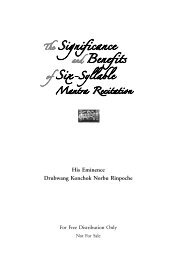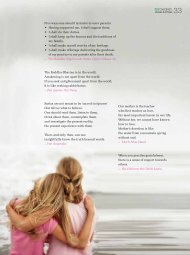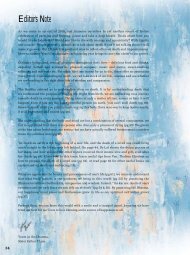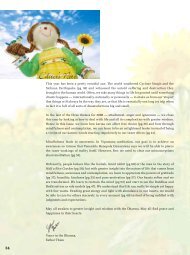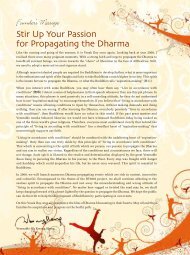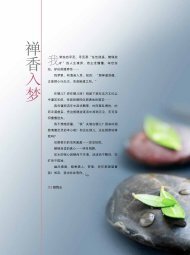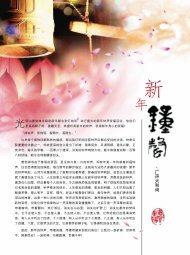Awaken16 - Kong Meng San Phor Kark See Monastery
Awaken16 - Kong Meng San Phor Kark See Monastery
Awaken16 - Kong Meng San Phor Kark See Monastery
Create successful ePaper yourself
Turn your PDF publications into a flip-book with our unique Google optimized e-Paper software.
Bodhisattva rites are performed. This is<br />
the history about Mount Jiuhua and its<br />
significance in Buddhism. Today, over<br />
hundreds and thousands of devotees from<br />
all over the world come to Mount Jiuhua<br />
for their pilgrimage every year.<br />
Mount Putuo<br />
When we arrived at Mount Putuo, it was<br />
nearly 7pm, for we had stopped at Ningbo<br />
City for two hours to see the Buddha’s<br />
relic in Asoka Temple. I could feel the<br />
joy and heightened mindfulness of the<br />
participants after seeing the relic. That<br />
night, we stopped over in the hotel called<br />
Xiaoxilei, which is on the right side of<br />
Puji Temple, the biggest temple in Mount<br />
Putuo.<br />
Mount Putuo, located on Lianhua Ocean<br />
( 莲 花 洋 ) of Zhoushan Archipelago ( 舟<br />
山 群 岛 ) to the east of Hangzhou Gulf,<br />
covers an area of only 12.5 square<br />
kilometres. Mount Putuo has beautiful<br />
sandy beaches; the loveliest of them is<br />
the Thousand Step Beach ( 千 步 沙 ). This<br />
stretches along the eastern coast and is<br />
separated from Hundred Step Beach ( 百<br />
步 沙 ) by a headland and cave. There are<br />
many other wonderful scenic sites on the<br />
island, including temples and nunneries,<br />
Exotic Rocks ( 奇 异 岩 石 ), The Sounds of<br />
Two Caves ( 两 洞 潮 音 ), Lotus Pool's Night<br />
Moon ( 莲 池 夜 月 ), Pantuo Evening Glow<br />
( 磐 陀 夕 照 ), Pantuo Morning Dawn ( 磐<br />
陀 晓 日 ), The Lights of Luojia ( 洛 迦 灯 火 )<br />
etc. Thus it is known as "the Buddhist<br />
Kingdom amidst the Sea and Sky" ( 海 天 佛<br />
国 ).<br />
Mount Putuo first became a Buddhist<br />
<strong>San</strong>ctuary during the Tang Dynasty.<br />
In AD 863, there was a Japanese monk<br />
named Hui’e who visited and studied on<br />
Mount Wutai ( 五 台 山 ) in China. When it<br />
Ksitigarbha Bodhisattva ( 地 藏 菩 萨 ). As his body was time for him to leave the mountain, he asked<br />
did not decompose even three years later, he was for permission to bring a Guanyin statue back with<br />
respected as the Ksitigarbha Bodhisattva. His body him to Japan for worship. Hui’e carried the sacred<br />
was wrapped with earth and preserved till today. The statue carefully by himself, and travelled by land to<br />
Flesh ( 肉 身 ) Pagoda was built to revere him, and thus Kaiyuan Temple ( 开 元 寺 ) at the port city of Ningbo<br />
Mount Jiuhua became the place where Ksitigarbha ( 宁 波 ).<br />
Issue 16 • January – April 2010 49<br />
awaken Features





